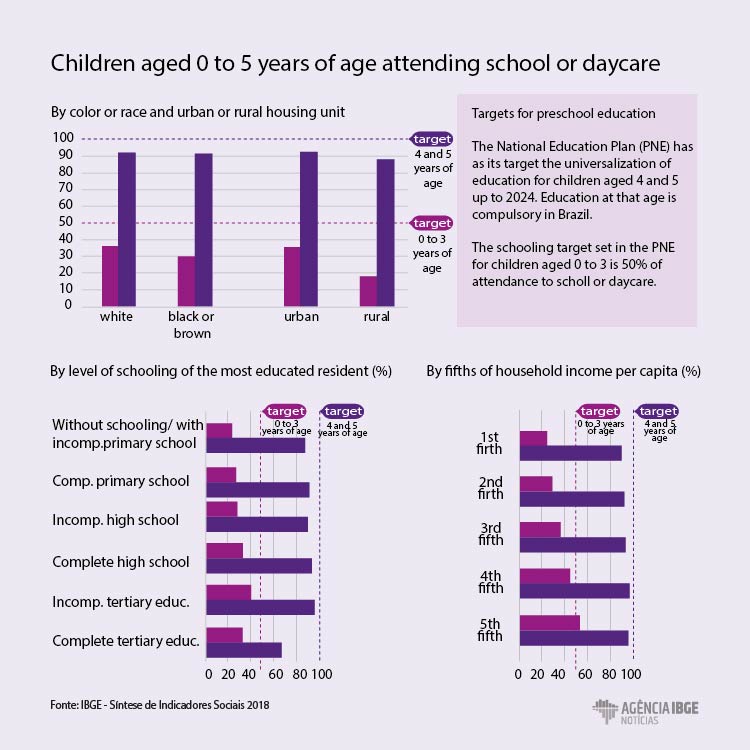Summay of Social Indicators
Rate of admission to tertiary education is higher among students from private schools
December 05, 2018 10h00 AM | Last Updated: December 06, 2018 10h45 AM

Among the students who finished high school in the public education segment, only 36% went to university. Considering students from provate schools, that percentage was more than twice as big: 79.2%. The figures were released today by the IBGE in the Summary of Social Indicators 2018, which highlights the uneven access to pre-school and higher education.
The IBGE researcher Betina Fresneda says that Brazil is the one country with biggest salary reward for persons with a higher education degree among all the member coutries of the Organization for Economic Cooperation and Development (OECD), which represents major economies and which our country has not joined yet. A person with a diploma in Brazil would earn 2.5 times more than a person with higher education, whereas among OECD countries the average was 1.6 times more. “It is a discrepancy that has to do with the existing inequalities in our country”, says Betina.
In 2017, 51.5% of tje white persons with complete high school had access to higher education. Among the black and browns that proportion hit 33.4%. The fact of having finished high school in a private institution made up for the differences concerning color or race: the rate of admission of white persons from private high school was 81.9%, and that of blacks and browns, 71.6%.
“The income profile is also vey uneven”, Betina highlights. The biggest proportions in higher education was formed by students whose household income per capita belonged to the highest 25% in the country.
For the pre-school segment, income-related inequalities are also part of the distribution of students among public schools and daycare centers. In 2017, 74.1% of children 0 to 5 used to attend a public school or daycare, but that proportion increased with the decrease of household income per capita: the fifth with the lowest income had 92.9% of their children in public schools, and that with the highest come, had 25.1%.

“Considering the four categories analyzed, the higher the income stratum or the level of schooling, the higher the attendance to private schools”, says the IBGE researcher Luanda Botelho. “Among the children who were not attending school or daycare and that reported the lack of vacancies or the absence of schools nearby as the mains causes for that, most replies came from persons depending on public schools. Those are usually the ones with the lowest level of schooling, in the lowest income fifths, residents of rural areas, and also black or brown".
The publication highlights there are targets for preschool education in Brazil, defined in the National Education Plan (PNE), made official in 2014. The Plan deals with the universalization of attendance to school or daycare for children aged 4 and 5. For children aged 0 to 3, the target is 50%.




















